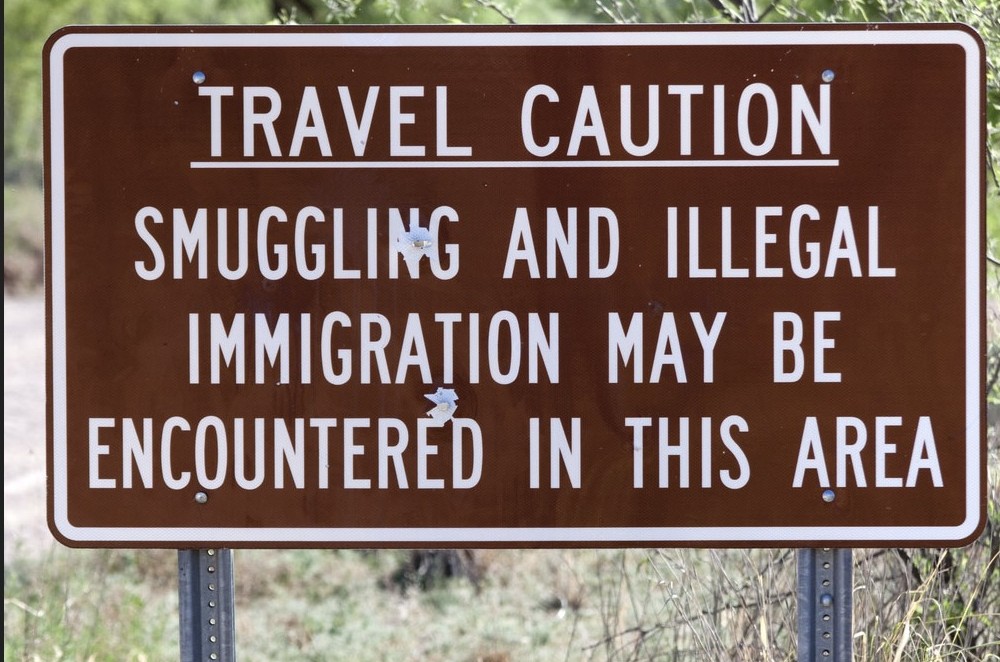Bottom Line Up Front: Immigration policies that create pathways to legalization, including programs like DACA, inadvertently signal that illegal entry can lead to permanent status, fueling a massive criminal enterprise that generates billions for cartels while subjecting migrants to exploitation and trafficking.
The data reveals that the U.S.-Mexico border has been transformed into a cartel-controlled profit center. Cartels and “coyotes” are reportedly earning around $13 billion a year by smuggling migrants across the United States/Mexico border, an amount that has soared from the 2018 number of just $500 million, representing a 2,500% increase in just five years.
This explosive growth coincides with Biden-era open border policies, expanded asylum processes and legalization programs that signal potential pathways to permanent status. 80 percent of unlawful border-crossers hire smugglers, according to a 2023 report by the Department of Homeland Security, demonstrating how thoroughly criminal organizations have monetized illegal immigration.
Border Patrol sector chiefs confirm unprecedented criminal control over migration routes. ‘Now nobody crosses without paying the cartels,’ testified Chief Patrol Agent John Modlin. Those who try to bypass the criminal networks face severe consequences, including beatings.
The financial incentives driving this criminal enterprise are enormous. Smuggling fees range from $2,000 to $40,000, with cartels taking a substantial cut at every stage. For most migrants, this represents years of savings, an investment they’d only make if they believed there was a real chance of staying in the U.S. If they thought they would be turned away at the border, jailed, or deported upon capture, they wouldn’t take the risk.
Many migrants go into debt or even enter into forms of indentured servitude to the cartels to cover the cost of being trafficked. This often results in exploitation, forced prostitution, and other abuses. It also fuels the ranks of street-level criminals distributing drugs for cartel-connected gangs inside the United States.
The promise of potential legalization has fueled a massive human trafficking pipeline. Smuggling migrants has become one of the top revenue streams, alongside drugs and extortion, for criminal organizations like Mexico’s Sinaloa and Jalisco cartels. Children are especially vulnerable in this system. One study estimates that nearly 60% of unaccompanied minors crossing the border are intercepted by cartels and forced into child pornography or drug trafficking.
The scale is staggering: during the Biden era (2021–2024), encounters of unaccompanied children at the U.S. border surged to 546,255. Trafficking children is not only profitable for the cartels, it is also incentivized by U.S. policies like DACA, which shield minors from deportation. These policies contribute to the liberal narrative that “families are being torn apart” when illegal immigrant parents are deported but choose to leave their U.S.-born “anchor babies” or DACA-protected children behind.
According to Pew Research (2024), roughly 4.4 million U.S.-born children under 18 live with an illegal immigrant parent. The Deferred Action for Childhood Arrivals (DACA) program protects many who entered the country illegally as minors, offering legal protections and work authorization. Even the program’s name, “Dreamers”, sends a message of opportunity, reinforcing the belief that entering the U.S. illegally with children can eventually lead to legal status. As of March 31, 2024, there were over half a million active DACA recipients in the country.
The same liberals who oppose ICE deportations and defend illegal immigration are also pushing for dramatic increases to the minimum wage. In California, a $30 minimum wage is currently under discussion. But the higher the minimum wage, the greater the incentive for companies to hire illegal workers who are willing to work for far less.
For context, even $10 an hour would be a substantial wage for most workers in Latin America, excluding Brazil, representing 3 to 6 times the average salary. This creates a powerful financial incentive for illegal migration and a cost-saving opportunity for U.S. employers, especially when compared to paying $30 an hour to legal workers.
The logical and least costly solution is to enforce existing immigration laws: deport illegal workers, secure the border, and reduce the pool of cheap, illegal labor. Wages would then rise naturally in industries currently dominated by illegals, helping American working-class citizens, without forcing all businesses to pay an artificially inflated $30 minimum wage. This approach would also reduce exploitation, human trafficking, and the abuse of vulnerable women and children, many of whom are forced into pornography or prostitution as part of the illegal migration pipeline.
The bottom line is this: any program that legitimizes or compensates illegal immigrants fuels the Border Crisis, encourages more illegal immigration, and increases crime. President Trump’s America First approach has tightened border enforcement and prioritized National Security. By closing the border and ramping up deportations, attempted illegal crossings have dropped dramatically, and a growing number of illegal immigrants have even signed up for voluntary deportation. This shift not only protects American jobs but also reduces the taxpayer burden imposed by illegal immigration.
Read the full article here
